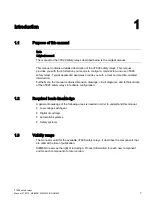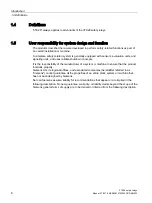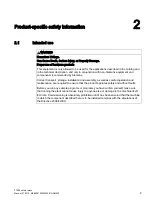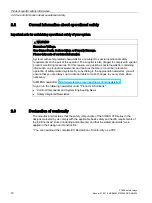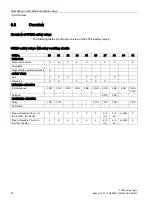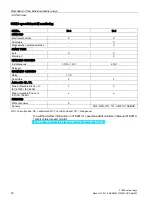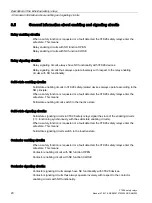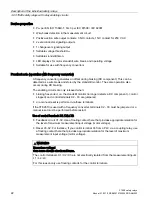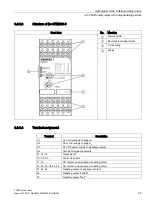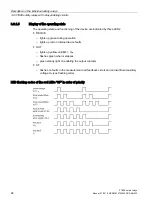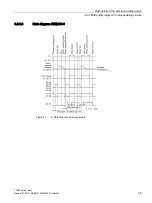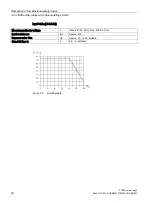
Description of the individual safety relays
3.5 General information about enabling and signaling circuits
3TK28 safety relays
20
Manual, 07/2016, NEB926157502000/RS-AB/003
3.5
General information about enabling and signaling circuits
Relay enabling circuits:
When a safety function is requested or a fault detected, the 3TK28 safety relays enter the
safe state. This means:
Relay enabling circuits with NO function OPEN
Relay enabling circuits with NC function CLOSE
Relay signaling circuits:
Relay signaling circuits always have NC functionality with 3TK28 devices.
Relay signaling circuits thus always operate inversely with respect to the relay enabling
circuits with NO functionality.
Solid-state enabling circuits:
Solid-state enabling circuits in 3TK28 safety-related devices always operate according to the
NO principle.
When a safety function is requested or a fault detected, the 3TK28 safety relays enter the
safe state. This means:
Solid-state enabling circuits switch to the inactive state.
Solid-state signaling circuits:
Solid-state signaling circuits in 3TK28 safety relays signal the state of the enabling circuits
(==> functioning synchronously with the solid-state enabling circuits).
When a safety function is requested or a fault detected, the 3TK28 safety relays enter the
safe state. This means:
Solid-state signaling circuits switch to the inactive state.
Contactor enabling circuits:
When a safety function is requested or a fault detected, the 3TK28 safety relays enter the
safe state. This means:
Contactor enabling circuits with NO function OPEN
Contactor enabling circuits with NC function CLOSE
Contactor signaling circuits:
Contactor signaling circuits always have NC functionality with 3TK28 devices.
Contactor signaling circuits thus always operate inversely with respect to the contactor
enabling circuits with NO functionality.


